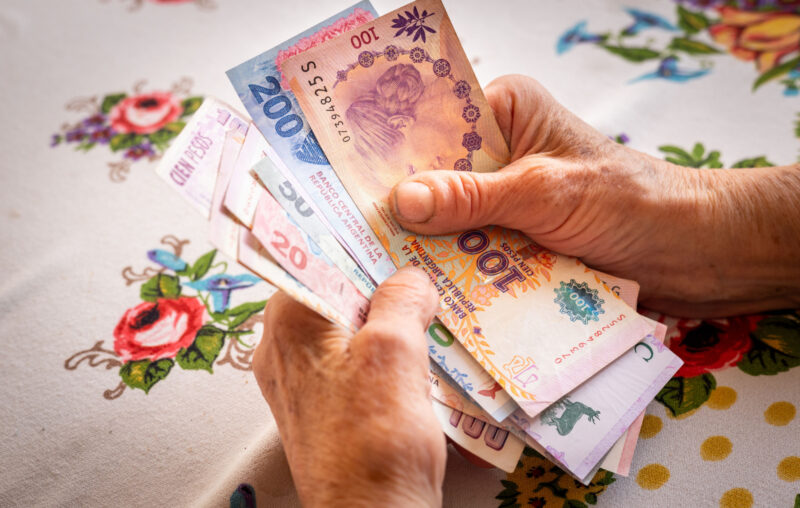Argentina’s Canary in the Coalmine

A recent issue of The Economist contained a deep irony.
The newspaper’s “Finance & Economics” section featured an article on the US economy. After expressing happy surprise that the US economy continues to grow despite headwinds, the article expressed two worries: first, that this growth would fuel further inflation (with no mention of the Fed’s monetizing the full $4.2 trillion of bipartisan COVID deficit-spending spree, as The Economist continues to blame supply chains and pent-up demand), and second, that Treasury rates (now at a 16-year high) will place pressure on the economy.
On the very next page, the section turns to the latest Argentine crisis. Twenty years ago, Argentina had tackled the peso crisis of 2001, the hyperinflation of the late 1980s, and the frequent military coups that persisted into the early 1980s. One commentator glibly predicted in 2006 that the Argentine people would never again tolerate inflation above ten percent. That problem was solved for several years by federal interference in the Central Bank, and a delicious but inaccurate asado of fake statistics – to the point that The Economist simply stopped reporting unreliable numbers coming from Argentina’s statistics office. Argentine inflation now stands at 138 percent (according to the latest official report). In a technicality that goes beyond the scope of this short piece, Argentina is now pushing the International Monetary Fund’s lending model to a breaking point. After two decades of bailouts and borrowing, Argentina may yet again default.
Without irony, and without any indication of a parallel to the US situation, The Economist reports that Argentina’s “policymakers are torn between printing pesos to cover the government’s bills and the need to avoid hyperinflation.”
The difference is obviously one of degree, but certainly not of kind. Both the Argentine and the US economies are suffering the consequences of interventionism, as central bankers are placed in the simultaneously unenviable and coveted position of mopping up the mess from profligate politicians – even though they, themselves, clearly suffer from a Hayekian knowledge problem, and have contributed their fair share to the situation by printing money and causing boom and bust cycles in their attempts to “fix” the economy.
But wait… surely the US and Argentina cannot be compared! The US is the world’s top economy. Despite the best efforts of politicians of both parties, the US manages to stay within the top 10 countries in the Economic Freedom of the World ranking. How can one compare the US to Argentina, which has suffered a century of political instability, and has been a darling of IMF case studies for the past 40 years?
Well, it wasn’t always that way. In 1910, Argentina was among the top eight richest countries in the world. It had more miles of roads and railroads than most European countries. It had enjoyed 50 years of constitutional stability, after a rocky waltz of dictators and civil wars, from the country’s independence in 1812 to unity under a classical liberal constitution in 1860. The Argentine constitution, mapped on the US Constitution, protected the rights of religion, free speech, commerce, and immigration, under a constitution of limited powers.
Alas, the constitution didn’t stick. The US Constitution was drafted for a country with a deep tradition of rule of law, local governance, and a Lockean mindset. Rousseau was translated into Spanish before Locke, and his ideas arrived in Argentina first. The Argentine founders, for all their goodwill and vision, attempted to plant a translation of the US constitution into a soil that consisted of corruption, strong-man rule (caudillismo) and central planning, all atavisms of Spanish colonialism. For about 50 years, the constitution offered respite from the cycle of tyranny and instability; the country grew and economic freedom attracted immigrant labor. But by the second decade of the 20th century, Argentina was starting to turn. The military first ousted a civilian government in 1930; Argentina was to face five other military coups in the 20th century. Although the military putschists were traditionally anti-communist, Colonel Juan Domingo Perón established fascism in the Argentine style. That legacy remains today, not just with a political party that explicitly carries his mantle, but with widespread corporatism, dirigisme, and deficit-spending.
Argentina shows how a country can fall from splendor to misery in the span of two short decades. It is still recovering. Or will it ever recover?
Superficially, the problem is macroeconomic: Politicians spend money they don’t have, and monetize the portions of the debt they can’t borrow from the IMF. But, more deeply, the problem is institutional. Argentina lacks rule of law and constitutional constraints. The central bank (BCRA) lacks independence; only one president of the BCRA has served a full term without being removed by the executive (Ernesto Bosch, the first president of the BCRA, from 1935 to 1942. Ironically, his second term was cut short by none other than Juan Domingo Perón, who didn’t have room in his agenda for an independent central bank).
Argentina is, once again, facing a crisis. In November, when its next payment is due, it might break the entire IMF system. Argentina’s politicians are addicted to spending the money of taxpayers and foreign bondholders, while coddling favored groups. Alas, the IMF has acted as an enabler, as it continues to lend to a profligate and irresponsible Argentine political class.
The US may not be that far behind. Indeed, the US is barely recovering from inflation unseen in the past 50 years, an inflation that was created by the Federal Reserve monetization of COVID-era pork-barrel spending. US debt is at an all-time high of a 130 percent debt-to-GDP ratio. Regulations and job licensing are exploding, as is federal involvement in the economy. The US, with about half of the economy controlled, directly or indirectly, by governments at all levels, remains the world’s cleanest dirty shirt. How long will that last?
Poor Argentina may well be the canary in the US coal mine, offering a textbook story of turning riches to rags through interventionist policies.











